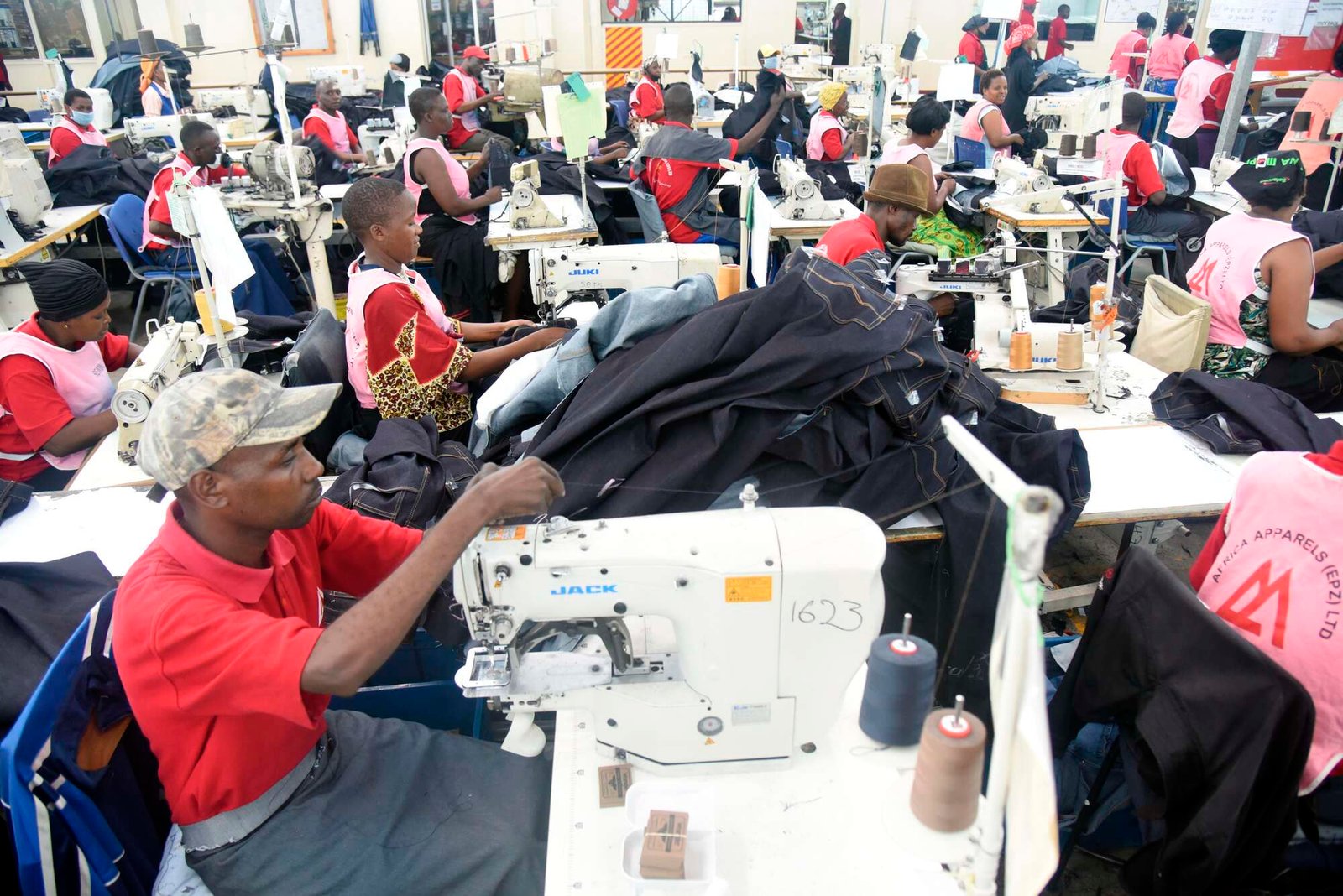[ad_1]
Economy
Securing Africa’s future beyond Agoa
Tuesday September 26 2023
Workers at an apparels factory in Nairobi Industrial area. FILE PHOTO | NMG
The World Economic Forum in Davos this year acknowledged a world grappling with multiple crises characterised by Covid-19, conflicts, soaring living costs, and climate change. Amid these challenges, Africa’s economic potential is garnering global recognition.
Its emerging role in markets and geopolitics is set to expand, driven by its natural resources and promising economic prospects.
This reality underscores the urgency for Africa to confront its trade-related hurdles, including convoluted regulations, restricted market access, and complex trade agreements.
Read: Agoa jobs in Kenya at 66000 ahead of trade pact expiry
Simplifying trade procedures is pivotal to benefiting businesses and propelling economic growth by amplifying exports, job opportunities, and competitiveness.
The African Growth and Opportunities Act (Agoa) is a great example of a beneficial programme for the continent.
Agoa is a cornerstone in preferential trade that empowers sub-Saharan African nations to export numerous products to the US market without tariff impositions, providing a more stable avenue for development compared to traditional aid methods.
The original Agoa legislation, initiated in May 2000, recognised a shared interest between the US and sub-Saharan Africa in fostering stable economic growth. It is committed to fostering heightened trade, investment, and breaking down barriers.
It has played a pivotal role in bolstering economic growth across African nations. Presently, almost 44 African countries benefit from Agoa’s preferences, invigorating essential sectors such as agriculture, textiles, and apparel.
Notably, US apparel imports from Agoa beneficiaries have risen from $953 million in 2001 to $1.4 billion in 2021 according to the US ITC 2023 Report.
This growth is primarily attributed to countries such as Kenya, Ethiopia, Ghana, Madagascar, Mauritius, and Lesotho.
Moreover, the sectors catalysed by Agoa have generated substantial employment opportunities—directly and indirectly—for over a million people, with women comprising a significant portion.
As global players seek diversification beyond Asia, Africa has significant potential to capitalise on this trend.
In June 2023, the United Nations Conference on Trade and Development (UNCTAD) released a comprehensive report assessing Agoa’s impact titled The African Growth and Opportunities Act; Limitations, Utilization, and Results’[1]. It underscores the varying effects of preferential market access based on exporting countries and specific sectors.
The report encompasses four analytical segments evaluating Agoa’s programme at different levels. One segment examines the overall interplay between poverty, trade preferences, and tools aimed at fostering economic development.
Another section highlights the positive, yet restricted impact of preferences fostered by the initiative. Notably, tariff preferences exert less influence on products that already enjoy duty-free status.
The latter part of the report focuses on sectoral perspectives, spanning materials such as apparel, minerals, and other commodities.
It also explores the potential of upgrading imports like hydrocarbons, cocoa, and cotton goods for improved results. Product upgrading emerges as a significant topic within Agoa’s review. It involves exploring how the programme could complement the African Continental Free Trade Agreement (AfCFTA), its implications for workers and underserved communities, and its role in driving economic growth.
The AfCFTA holds promise by facilitating access to regional markets and bolstering production networks, equipping domestic industries for the global stage.
Digging deeper into Agoa’s impact, the report underscores an intriguing aspect. Import disparities between the US and different nations might create a perception of non-uniform trade shifts.
Importantly, while aggregate imports from all Agoa beneficiaries witnessed a modest 37 percent growth from 1998-2000 to 2019-2021, this increases significantly when excluding oil exporters in Angola and Nigeria.
These two nations experienced a 53 percent import decline during the same period, while the remaining 37 Agoa countries experienced a striking 144 percent surge—a rate consistent with the broader growth in total US imports from all sources during the same period.
As we encourage more programmes like Agoa, it is also critical that we look at their longevity. Industries such as textiles and apparel, would typically take about five years to achieve sustainable profits.
Read: US guarded on Kenya trade deal past Agoa expiry
It is also necessary to encourage long-term plans to assist to enhance diversification of exports, foster market certainty and counter potential slowdown of investment and trade.
The writer is the senior advisor, Global Lead, Industry and Commerce at the Tony Blair Institute for Global Change.
[ad_2]
Source link



